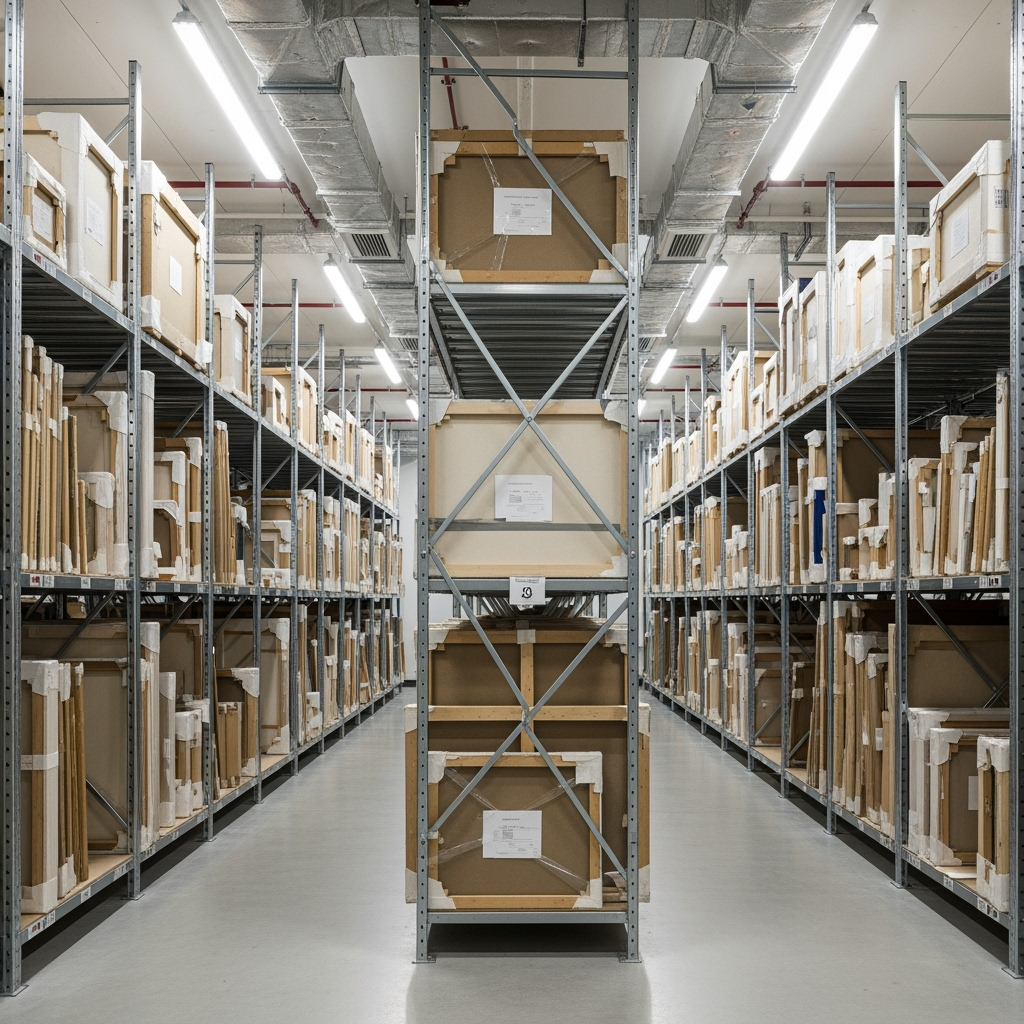
Why Disaster-Proof Storage is Essential for Art Collections
Art collections represent not just monetary value, but often irreplaceable cultural and personal significance. In an era of increasing natural disasters and climate uncertainty, protecting these valuable pieces requires comprehensive planning and professional-grade storage solutions. This guide will help you create a disaster-proof storage strategy for your art collection.
Climate Control: Your First Line of Defense
The foundation of art preservation lies in maintaining precise environmental conditions. Professional climate-controlled storage offers:
- Constant temperature regulation (ideal range: 70-75°F)
- Humidity control (45-55% relative humidity)
- Protection from UV exposure
- Air filtration systems

Essential Elements of Disaster-Proof Art Storage
Creating a truly disaster-proof storage solution requires attention to multiple factors:
1. Physical Protection
- Reinforced storage units resistant to impact
- Waterproof storage containers
- Specialized art racks and hanging systems
- Fire-resistant storage materials
2. Security Measures
- 24/7 surveillance systems
- Advanced access control
- Individual unit alarms
- Professional security staff
3. Emergency Response Planning
- Rapid response protocols
- Emergency evacuation procedures
- Backup power systems
- Professional art handling services on call
Choosing the Right Storage Solution
When selecting a storage facility for your art collection, consider these critical factors:
- Facility location relative to flood zones and other natural hazards
- Building construction quality and disaster resistance
- Climate control system reliability and backup measures
- Staff expertise in art handling and emergency response
- Insurance coverage and facility certifications
Professional Documentation and Inventory Management
Maintain comprehensive records of your collection including:
- High-resolution photographs of each piece
- Detailed condition reports
- Authentication documents and provenance
- Insurance documentation
- Digital backup of all records
Emergency Access Protocol
Establish clear procedures for emergency access to your collection:
- Designated emergency contacts
- Written authorization procedures
- Emergency contact information for art handlers and conservators
- Evacuation priority list for most valuable pieces
Regular Maintenance and Monitoring
Implement a regular maintenance schedule that includes:
- Monthly climate control system checks
- Quarterly condition assessments
- Bi-annual emergency response drills
- Annual update of documentation and procedures
Working with Professional Art Storage Services
Consider partnering with specialized art storage services that offer:
- Professional art handling expertise
- Custom crating and packing solutions
- Specialized transport services
- Conservation resources
- Emergency response capabilities
Insurance Considerations
Ensure comprehensive coverage through:
- Specialized art insurance policies
- Coverage for natural disasters and emergencies
- Transit insurance for movement of pieces
- Regular policy reviews and updates
Conclusion: Peace of Mind for Your Collection
Investing in disaster-proof storage for your art collection provides more than just protection – it offers peace of mind knowing your valuable pieces are safe in any emergency. Regular review and updates to your storage strategy ensure continued protection as both your collection and storage technology evolve.










Leave a Reply